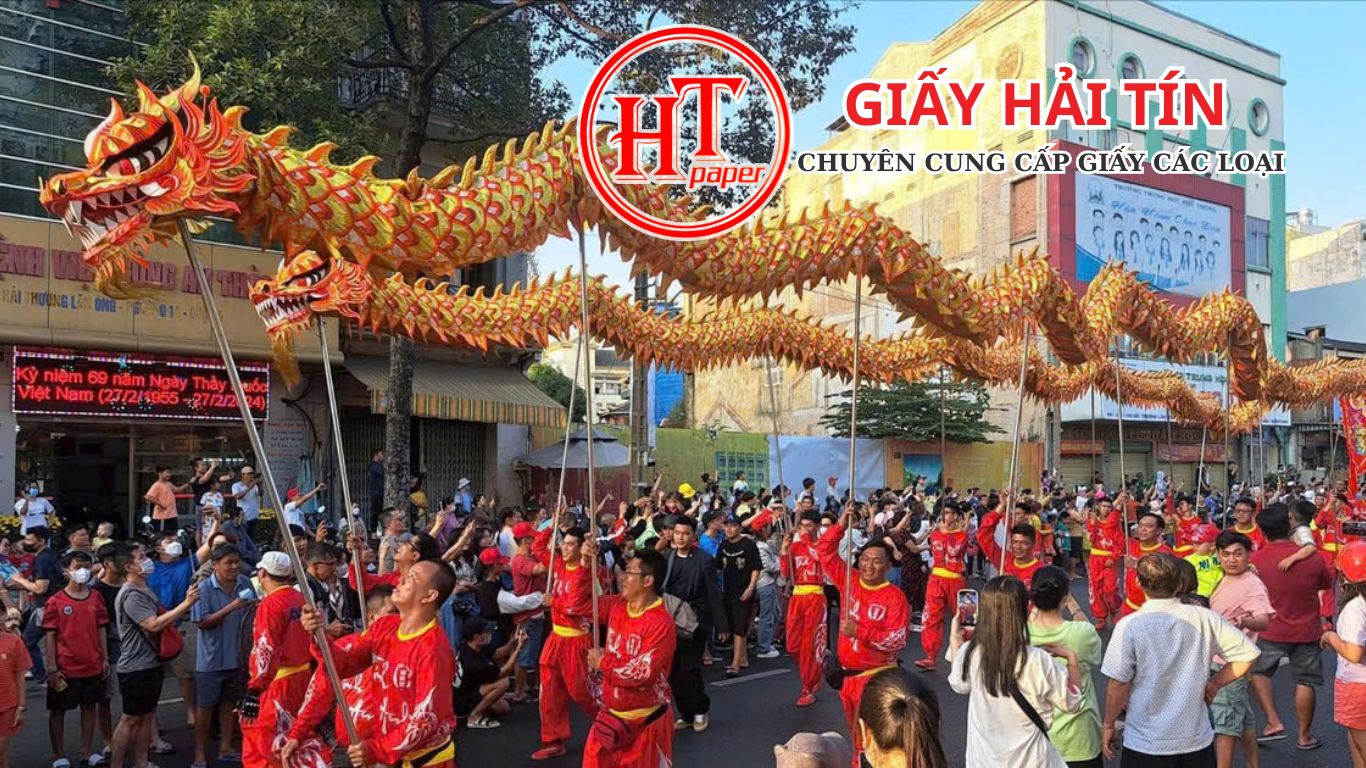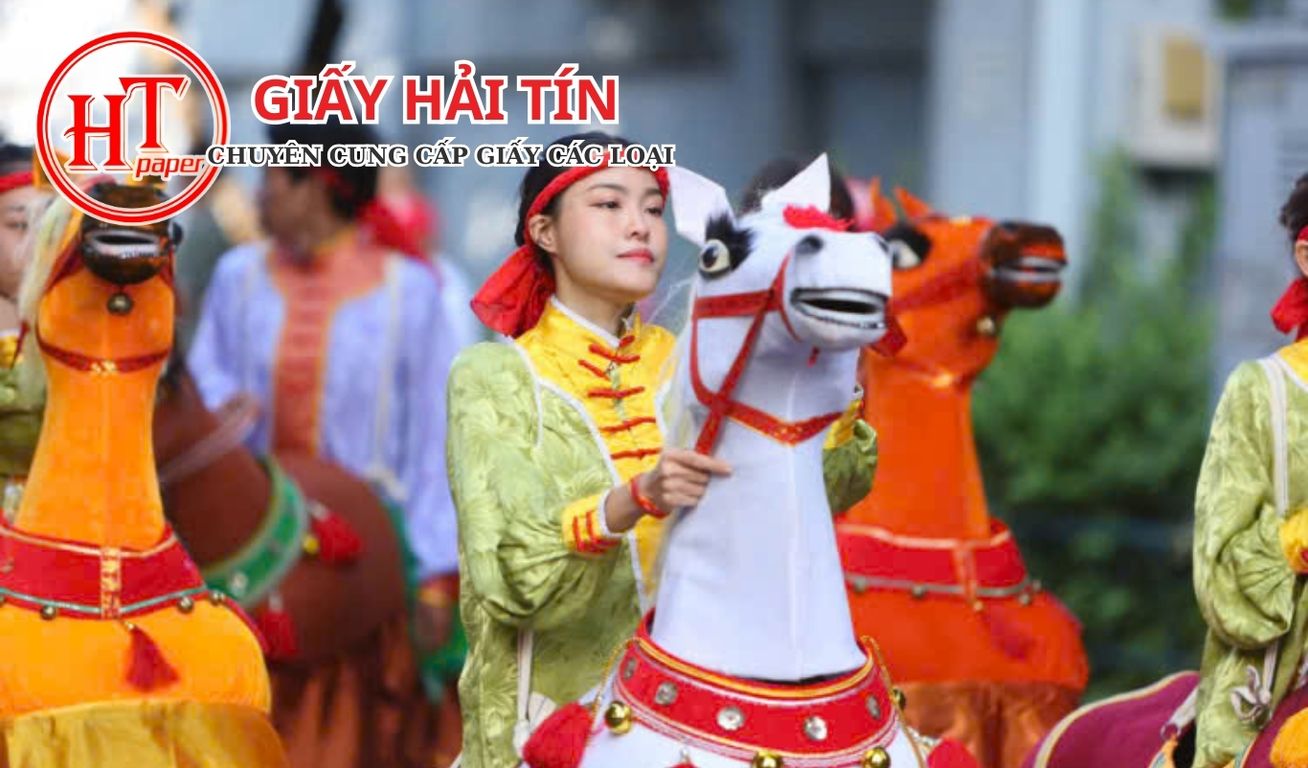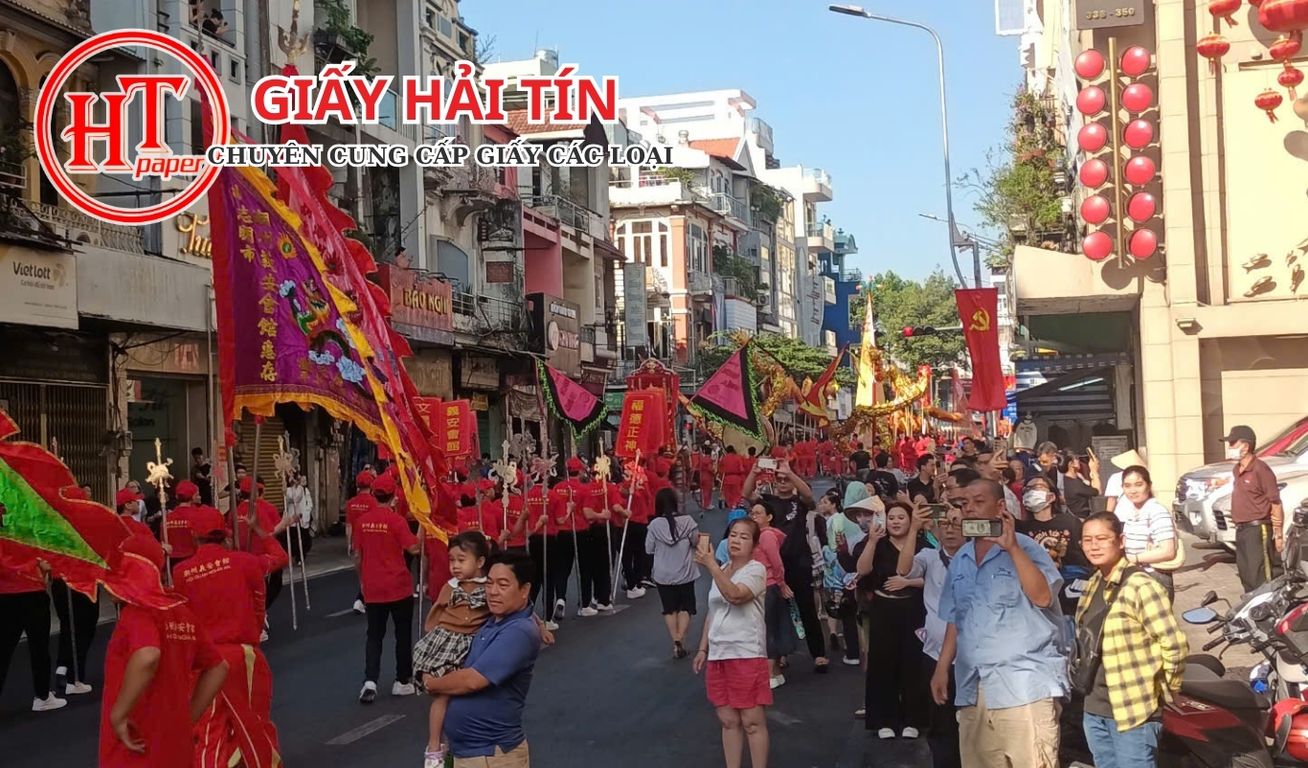Hải Tín và Hành Trình Trải Nghiệm Văn Hóa
Hải Tín và bộ phận nhân viên Phòng Marketing đã có mặt tại đường Trần Hưng Đạo (Quận 5) để cùng hòa mình và tham gia vào đoàn diễu hành. Chúng tôi tin rằng yếu tố văn hóa và doanh nghiệp luôn phải đồng hành cùng nhau, điều đó tạo nên giá trị văn hóa của Hải Tín trong gần 20 năm qua.
Lễ hội Nghinh Ông năm nay được tổ chức tại khu vực Chợ Lớn – nơi hội tụ của nhiều giá trị văn hóa và lịch sử của người Hoa tại TP.HCM. Đoàn diễu hành chính thức khởi hành từ Hội quán Nghĩa An, một địa điểm linh thiêng nơi thờ Quan Thánh Đế Quân, hay còn gọi là Quan Công – người được người dân kính trọng nhờ lòng trung nghĩa và tinh thần anh hùng. Tượng Quan Công, được rước qua quãng đường dài 4 km, đi qua nhiều tuyến đường mang tên những vị anh hùng như Lão Tử, Trần Hưng Đạo, Phùng Hưng, Hải Thượng Lãn Ông, Đỗ Ngọc Thạch, Nguyễn Trãi, Châu Văn Liêm, Lão Tử và Lương Nhữ Học, đã tạo nên một hành trình đầy cảm xúc và ấn tượng.

Diễu Hành Đậm Đà Bản Sắc
Không chỉ là một cuộc hành trình mang tính tâm linh, diễu hành còn là màn trình diễn nghệ thuật đặc sắc của cộng đồng. Các thành viên tham gia diễu hành hóa trang thành nhiều nhân vật mang tính biểu tượng như tiên nữ, Thần Tài, quân lính và cả ngựa xích thố. Sự biến hóa trang phục cùng những điệu múa, bước di chuyển nhịp nhàng đã tạo nên một bức tranh sống động, phản ánh sức trẻ và niềm tự hào của cộng đồng người Hoa.
Đặc biệt, các màn biểu diễn múa lân sư rồng luôn là điểm nhấn của lễ hội. Một con rồng khổng lồ, dài gần 70 mét, do 35 người điều khiển đã thu hút sự chú ý của không chỉ người dân địa phương mà còn du khách. Từng đoạn diễu hành dừng lại ở các ngã tư, khu dân cư, chùa và hội quán, nơi mà các đoàn biểu diễn múa lân, múa rồng.

Ý Nghĩa Và Giá Trị Văn Hóa
Lễ hội Nghinh Ông không chỉ đơn thuần là một sự kiện văn hóa, mà còn chứa đựng nhiều giá trị tâm linh sâu sắc. Qua việc tổ chức lễ hội, cộng đồng người Hoa thể hiện lòng thành kính đối với Quan Công, người không chỉ được coi là biểu tượng của sự trung nghĩa mà còn là nguồn cảm hứng cho các thế hệ trong việc vượt qua khó khăn và thử thách. Ngoài ra, lễ hội còn mang ý nghĩa cầu mong mưa thuận gió hòa, quốc thái dân an – mong ước về một năm mới an khang, thịnh vượng.
Sự kiện còn là cơ hội để các thế hệ trẻ tìm hiểu về cội nguồn văn hóa, học hỏi và tiếp bước những truyền thống tốt đẹp của tổ tiên. Theo ông Trần Em – Trưởng hội quán Nghĩa An, lễ vía Quan Công đã tồn tại được hàng trăm năm qua và từng bước phát triển từ quy mô nhỏ trong hội quán đến hình thức diễu hành trên đường phố kể từ năm 2023.
Tác Động Đến Đời Sống Tinh Thần Và Du Lịch

Ngoài giá trị văn hóa, lễ hội Nghinh Ông còn góp phần làm phong phú đời sống tinh thần của người dân TP.HCM. Sự tham gia nhiệt tình của đông đảo người dân và khách du lịch đã biến lễ hội trở thành một điểm nhấn quan trọng. Những cảnh tượng rộn rã, những màn biểu diễn đầy màu sắc đã làm bừng sáng khu phố Chợ Lớn
Lễ hội Nghinh Ông với sự giao thoa giữa nét cổ truyền và hiện đại đã tạo ra một không gian giao lưu văn hóa độc đáo, mở ra cơ hội cho những trải nghiệm mới mẻ và gần gũi với truyền thống của người Hoa. Đây cũng là dịp để các doanh nghiệp, tổ chức địa phương tận dụng cơ hội quảng bá hình ảnh văn hóa đặc sắc, góp phần thúc đẩy du lịch văn hóa tại TP.HCM.
Kết Luận
Lễ hội Nghinh Ông không chỉ là dịp để tưởng nhớ và tôn vinh những giá trị truyền thống, mà còn là biểu hiện của niềm tự hào, lòng kiêu hãnh của cộng đồng người Hoa tại TP.HCM. Qua mỗi bước diễu hành, qua từng màn biểu diễn, những giá trị văn hóa được truyền tải, được sống lại, nhắc nhở mỗi người về cội nguồn, về sự kiên trì và lòng trung thành của tổ tiên. Với sự tham gia của gần 1.000 người cùng nhiều tiết mục nghệ thuật độc đáo, lễ hội năm nay đã thành công rực rỡ, khẳng định vị thế của văn hóa người Hoa trong đời sống tinh thần của thành phố.